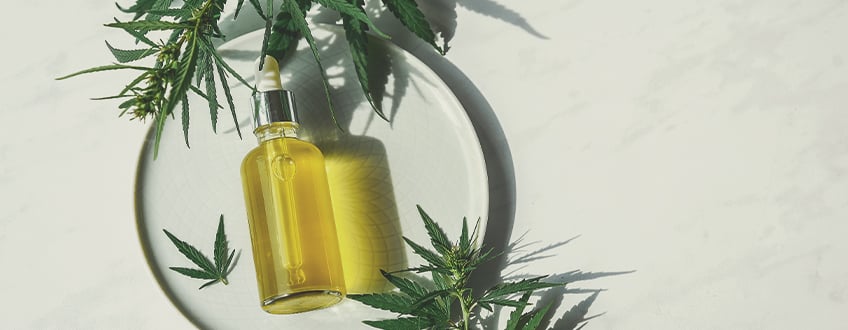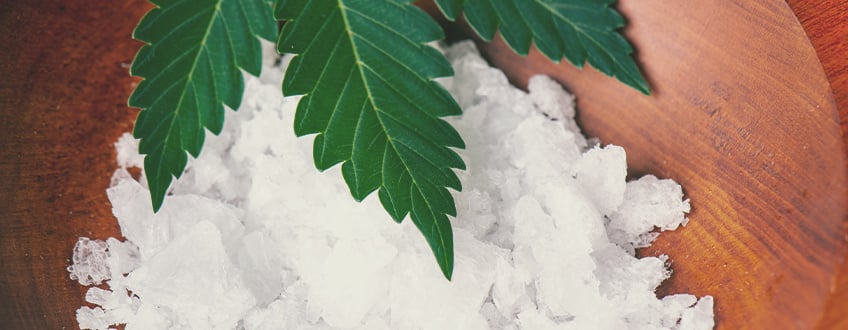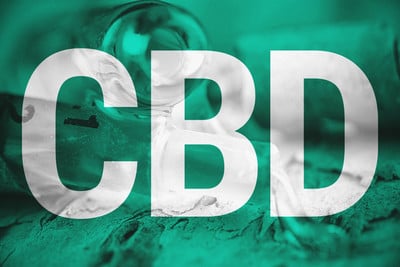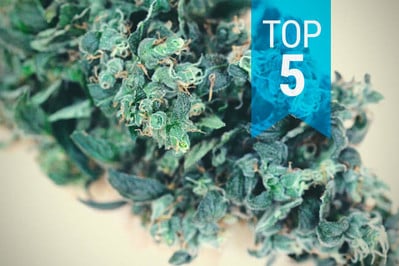.

RQS Interviews — Rachael Breaks Down All Things CBD
Hi, my name is Rachael. I'm really passionate about CBD! You can find me on Instagram at @cbdwoman or at YouTube @cbdwoman and see more on my website www.exciteforlife.co.uk.
At Royal Queen Seeds, we are constantly on the lookout for the best information and knowledge about cannabis. In our interviews, we talk to figures from all over the cannabis industry. Today, we have the pleasure of speaking with Rachael.
CBD offers a host of beneficial properties. Many users take CBD on a daily basis for a clear state of mind.
Find out how CBD interacts with the endocannabinoid system, the key differences between products, and how to make your own preparations in this interview.
|
(Listen to it in Spotify and Apple Podcast) |
|---|
| Listen to it in Spotify and Apple Podcast |
What is CBD and why is it said to be therapeutic?
Here in the UK, we’re only legally allowed to extract CBD from the industrial hemp plant, as industrial hemp is naturally high in CBD but very low in THC. THC is the element that gets people stoned when taking recreational cannabis, but it occurs in such trace amounts in hemp that there is no risk of getting high.
To understand why CBD is so beneficial, we should first consider that there are over 100 cannabinoids in the hemp plant. These chemical compounds are capable of interacting with our innate endocannabinoid system—a network made up of neurotransmitters and receptors that assists other physiological systems, such as the respiratory system, the immune system, and the nervous system. The endocannabinoid system lends a hand in everything that your body does, so if one system is not performing properly, the ECS can say, “Hey, you need to work a bit harder there”, and helps to keep everything in a state of balance.
Achieving this state of internal equilibrium, also known as homeostasis, is perhaps the endocannabinoid system’s main job. To do so, our bodies naturally produce chemicals called “endocannabinoids”. As adults, we make about 40–60 milligrams of endocannabinoids in our bodies every day. Now, for some of us, we're just a little bit deficient, whether it's because we've got a physical illness, or because of the stress in the world, or for whatever reason.
CBD and the other cannabinoids from the hemp plant are quite similar to the endocannabinoids that we produce naturally, so when we put CBD into the body, it interfaces with the endocannabinoid system and helps the body function at an optimal level.
"To make a full-spectrum or broad-spectrum CBD oil, you'd have to get a hemp plant and extract the phytochemicals from within, which is not always an easy process, as you might not be allowed to grow hemp in your country. But you can still make CBD oil at home using the isolate."
What should we know about the different types of CBD products?
The whole point of using CBD is to get it into the bloodstream, and there are four ways to do that. First, you can either vape or smoke it; inhalation is the fastest way to deliver the cannabinoid into the bloodstream (via the lungs), but effects will only last for an hour or so.
Then, you've got the edible option; ingesting CBD, whether in capsule form or as an edible (like gummy bears, for example) will take about an hour to travel through the digestive system before it’s metabolised by the liver. From here, CBD will reach the bloodstream and effects will last for about eight hours. This means ingestion is the longest-lasting method of CBD intake.
Then there’s the sublingual option, which works perfectly with CBD oil. Essentially, you put the oil under your tongue and wait a minute or so for the mucous membranes in the mouth to diffuse the CBD into the bloodstream. As the second-quickest method, it takes about 15 minutes to experience effects, which will last for about 4–5 hours in turn. This is why it’s often best to take an oil once in the morning and once in the afternoon.
The final option is topical absorption. Topical methods exist to deliver the cannabinoid to endocannabinoid receptors in the skin. These creams and balms won’t reach the blood, but will be absorbed by the epidermis, so it's good if you want to target a particular area.

Before we buy any CBD product, how can we know which CBD percentage is best for us?
The only reason you would want a really high-strength CBD oil is if you’re following a natural dosage progression. For example, say you've been taking 40 milligrams of CBD oil for a while now (most people take about 10 milligrams per day, FYI). Taking this dosage using a 5% CBD oil bottle containing 500 milligrams equates to 2.5 milligrams of CBD per drop. Following our logic, you’d have to place about 16 drops of CBD oil under your tongue throughout the day. Whereas, with a 1000-milligram bottle containing 10% CBD, it would contain 5 milligrams per drop, cutting your daily drops down to 8, without sacrificing CBD content. The same goes for the 2,000-milligram and 4,000-milligram bottles—fewer drops are needed to intake the same amount of CBD.
So, you only really want to go for the highest strength if you’re looking to streamline dosing, or perhaps save some time and money on buying CBD oil.
As an example, if you were taking 10 milligrams of CBD a day and you bought a 500-milligram bottle, that's going to last you for 50 days; if you bought a 1,000-milligram bottle, however, it will last you twice as long because it's got twice as much in it.
This is why I always suggest people start off on the lowest strength.
Because we're all different, with unique bodies and different lifestyles, starting at around 10 milligrams of CBD per day is a good way to form a baseline.
Then, you can just gradually increase as necessary until you achieve the desired results. In other words, beginners don’t need to buy an expensive CBD oil that’s going to last 8 months, when they can buy one at a more reasonable price that will last for, say, 50 days. On the flip side, experienced CBD users on higher doses will likely save money by opting to buy higher concentrations.
 CBD Dosage Calculator
CBD Dosage Calculator
 CBD Dosage Calculator
CBD Dosage Calculator
How can we find our best consumption method?
It's just a personal choice, really. Sometimes CBD oils do taste of hemp, which not all users love. In this case, they may be better off eating a CBD-infused gummy bear or swallowing a CBD capsule because it masks the taste of hemp. Other people don’t mind the taste of CBD oil at all.
That’s why I like having the store, because when people come in, they can have a little sample of it and see whether or not they like it. Some people say, “Oh, that’s fine”, and others are like, “No, I don’t like the taste of that”, so in the latter case I suggest taking an edible of some sort.
Vaping tends to be better for those looking to dose CBD quickly and on the go. Maybe they're out and about all day and just want to, you know, balance the mood and things—vaping can be great for this. But, vaping CBD can get quite expensive as you could vape through a 10ml bottle in a day if you wanted to, so it can run out quite quickly. Plus, because it doesn't last in the system as long, it’s something you've got to keep doing throughout the day. So, I sort of suggest people vape as a bit of an add-on to their CBD regimen, keeping the vape with them throughout the day and then taking something like an oil or capsule as the main source of CBD.
Can we make CBD products at home?
If you want to make CBD products at home, you can buy CBD isolate. It doesn’t have the rest of the cannabinoids from the plant, it's just CBD. It usually comes in the form of a white powder, and you can use it to make your own CBD vape juice at home.
It's really easy to do, all you do is buy some PG/VG, which you can get off Amazon, and just mix the CBD crystal isolate into the PG/VG. You warm it up a little bit (not over 60 degrees) just so the crystals blend, and then you could put your own little flavor in there if you wanted to. So yeah, you can make your own CBD vape juice with the isolate.
You can also use it for baking; you could add it into butter and make cakes or brownies, or even just spread it onto your toast.
You can also make CBD bath bombs. You just add the CBD into the bath bomb mixture and add it to your bath, which is nice.
To make a full-spectrum or broad-spectrum CBD oil, you'd have to get a hemp plant and extract the phytochemicals from within, which is not always an easy process, as you might not be allowed to grow hemp in your country. But you can still make CBD oil at home using the isolate.
All you would do is mix the isolate with some olive oil, coconut oil, or hemp seed oil—to carry the cannabinoid into the body—and then just warm it slightly so they melt and infuse; then you'd have your own CBD oil at home.

How much CBD should we take in a day?
When I first started in the industry, the maximum daily allowance for CBD consumption was 200 milligrams per day, and now they've changed it to 70 milligrams. I have taken about 300 milligrams in a day before just to see what it would be like, and I was fine; there weren't any negative effects or anything.
The thing is, if, for instance, our endocannabinoid system only needs 30 milligrams of CBD, if you were to take 60 milligrams, the body would just excrete the other 30 milligrams that it didn't need. So it can be a waste of money to take it if you don't need it, if that makes sense.
Can we develop CBD tolerance?
Some research shows that after six months of taking isolated CBD, users built up a tolerance to it and needed to take more.
It’s the same with THC; when people smoke THC, if they smoked it for a while, they can build a tolerance to it, so what I always suggest to my customers is, take it for about three or four months, and then just have a week or two where you don't take it at all. Because then it will reset, and when you do start taking CBD again, you can go back from 30 milligrams to 10 milligrams a day, for example.
Can you mix CBD with other substances or medications?
I always suggest that people taking medication chat to their doctor first, but generally it's okay to take CBD with medication, just NOT at the same time.
So, if you were to take your medication and a CBD capsule at the same time, they'd travel through the digestive system and the liver together. CBD can inhibit hepatic drug metabolism, and what that basically means is that the CBD sees the medication as a foreign body and tries to expel it out of the body.
So, if you leave an hour gap between the medication and CBD, it's fine. You're giving the medication time to reach the liver and bloodstream, and then when you take the CBD it's not going to interfere with it.
Can our pets use CBD?
Anything that has a backbone can benefit from using CBD, because anything that has a backbone has an endocannabinoid system, so a lot of my customers do give CBD to their dogs. I give it to my cats, just in a much smaller amount.
If you were to give it to your pet, just get the lowest strength oil, which is a 500 milligram bottle (2.5 milligrams per drop).
You would just put like a quarter of the amount that an adult would take, depending on the size of the dog, on some treats, and they can eat it down. And a lot of customers do say that their dogs benefit from CBD—it’s just good for all-around health.






































